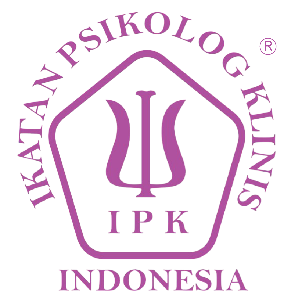Transformasi Pecandu Penyandang HIV/AIDS Menjadi Konselor Adiksi: Sebuah Kajian Life History
DOI:
https://doi.org/10.26740/jptt.v11n2.p187-203Keywords:
Agency, struktur, pecandu, HIV/AIDS, konselor adiksiAbstract
Using Giddens structuration theory and Banduras concept of agency, this quasi-life-historical study deals with how an interplay between agency and social structure produced the transformation of a participant from a drug addict with HIV/AIDS into an addiction counselor. In response to the structural forces at work in her society, the subject exercised her agency in ways that led, as an unintended consequence, to her contracting HIV/AIDS. Drug abuse, too, was another of her self-defeating ways of tackling lifes trials, such as the excess of pocket money, dysfunctional family communications, and stifling parental disciplinary styles. Structural forces, taking the forms of rehabilitation facilities and family and community supports, played a key role in her success in kicking her drug habit and becoming an addiction counselor. The transformation, however, is best seen as the product of a favorable interplay between existing structural forces and the subjects constructive ways of enacting her agency.
Keywords: Agency, structure, drug addict, HIV/AIDS, addiction counselor
Abstrak: Menggunakan metode quasi-life history, riset kualitatif ini mengkaji transformasi subjek dari pecandu penyandang HIV/AIDS menjadi konselor adiksi. Merujuk pada teori strukturasi Giddens dan konsep agency dari Bandura, studi ini mencoba memahami bagaimana struktur dan agency berinteraksi dan menghasilkan transformasi tersebut. Menjadi penyandang HIV/AIDS adalah akibat yang tidak diniatkan (unintended consequence) dari cara subjek menjalankan agency-nya dalam menanggapi daya-daya struktural dalam masyarakat. Dalam menyikapi peraturan orang tua, ketidakharmonisan komunikasi keluarga dan berlebihnya uang saku, subjek justru mengonsumsi NAPZA. Di sisi lain, ada sejumlah daya struktural yang membantu subjek membebaskan diri dari adiksi dan menjadi konselor, seperti program rehabilitasi, dukungan masyarakat sekitar, dan membaiknya sikap keluarga. Alih-alih bekerja sendiri, daya-daya struktural tersebut bersinergi dengan perjuangan subjek. Studi ini menyimpulkan bahwa transformasi subjek dari pencandu NAPZA dan penyandang HIV/AIDS menjadi konselor adiksi dapat dipahami sebagai hasil sinergi antara agency individu dan struktur sosial.
References
Bandura, A. (1977). Social learning theory. New Jersey: Prentice-Hall.
Bandura, A. (1989). Human agency in social cognitive theory. American Psychologist, 44, 1175-1184. https://doi.org/10.1037/0003-066X.44.9.1175
Bandura, A. (1999). Social cognitive theory: An agentic perspective. Asian Journal of Social Psychology, 2, 21-41. https://doi.org/10.1111/1467-839X.00024
Brantlinger, E., Jimenez, R., Klingner, J., Pugach, M., & Richardson, V. (2005). Qualitative studies in special education. Exceptional Children, 71, 195-207. https://doi.org/10.1177/001440290507100205
Brouneus, K. (2011). In-depth interviewing: The process, skill and ethics of interviews in peace research. In K. Höglund & M. Öberg (Eds.), Understanding peace research: Methods and challenges (pp. 130-145). London: Routledge.
Colman, A. M. (2006). Oxford dictionary of psychology. Oxford: Oxford University Press.
Crockett, L. J. (2002). Agency in the life course: Concepts and processes. In R. Dientsbier & L.J. Crockett (Eds.), Agency, motivation, and the life course (pp. 1-30). Nebraska: The University of Nebraska Press.
Elder, G.H., & ORand, A.M. (1995). Adult lives in a changing society. In K. S. Cook, G.A. Fine, & J.S. House (Eds.), Sociological perspectives on social psychology (pp. 452-475). Boston: Allyn and Bacon.
Emerson, P., & Frosh, S. (2004). Critical narrative analysis in psychology a guide to practic. London: Palgrave Mcmillan.
Giddens, A. (1984). The constitution of society. Cambridge: Polity Press.
Heckhausen, J., Wrosch, C., & Schulz, R. (2018). Agency and motivation in adulthood and old age. Annual Review of Psychology, 70, 191-217. https://doi.org/10.1146/annurev-psych-010418-103043
Herek, G. M., Capitanio, J. P., & Widaman, K. F. (2002). HIV-related stigma and knowledge in the United States: Prevalence and trends, 1991-1999. American Journal of Public Health, 92, 371-377. doi:10.2105/ajph.92.3.371
Hurlock, E. B. (2011). Psikologi perkembangan: Suatu pendekatan sepanjang rentang kehidupan. Jakarta: Penerbit Erlangga.
Joas, H. (1996). The creativity of action. Cambridge: Polity Press.
Johnston, T. M., Brezina, T., & Crank, B. R. (2019). Agency, self-efficacy, and desistance from crime: An Application of social cognitive theory. Journal of Developmental and Life-Course Criminology, 5, 60-85. https://doi.org/10.1007/s40865-018-0101-1
Kementerian Kesehatan RI (Kemenkes RI). (2018). Situasi umum HIV/AIDS dan tes HIV. Retrieved from https://pusdatin.kemkes.go.id/article/view/19042200004/situasi-umum-hiv-aids-dan-tes-hiv.html
Lamsal, M. (2012). The structuration approach of Anthony Giddens. Himalayan Journal of Sociology & Antropology, 5, 111-122. https://doi.org/10.3126/hjsa.v5i0.7043
Larson, R. W. (2000). Toward a psychology of positive youth development. American Psychologist, 55, 170-183. https://doi.org/10.1037//0003-066X,55.1.170
Mahardining, A. B. (2010). Hubungan antara pengetahuan, motivasi, dan dukungan keluarga dengan kebutuhan terapi ARV ODHA. Jurnal Kesehatan Masyarakat, 5, 131-137. https://doi.org/10.15294/kemas.v5i2.1871
Makoae, L. N., Greeff, M., Phetlhu, R. D., Leana, R. U., Naidoo, J. R., Kohi, T. W., Dlamini, P. S., Chirwa, M. L., & Holzemer, W. L. (2008). Coping with HIV-related stigma in five African countries. Journal of the Association of Nurses in AIDS Care, 19. https://doi.org/10.1016/j.jana.2007.11.004
Markus, H., & Nurius, P. (1986). Possible selves. American Psychologist, 41, 954-959. https://doi.org/10.1037/0003-066X.41.9.954
Neuman, W. L. (2016). Metodologi penelitian sosial: Pendekatan kualitatif dan kuantitatif (7 ed.). Jakarta: PT Indeks.
Nurchayati. (2010). Foreign exchange heroes or family builders? The life histories of three Indonesian women migrant workers. (Unpusblished Thesis), Ohio University, Athens.
Oppong, S. (2014). Between Bandura and Giddens: Structuration in social psychological research. Psychological Thought, 7, 111-123. https://doi.org/10.5964/psyct.v7i2.104
Pardita, D. P. Y., & Sudibia, I. K. (2014). Dampak sosial, ekonomi, dan psikologis penderita HIV AIDS di kota Denpasar. Jurnal Studi Ekonomi Buletin, 19, 193-199. https://ojs.unud.ac.id/index.php/bse/article/view/18814
Putra, M. B. A. (2016). Religiusitas dan kesejahteraan subyektif penderita HIV/AIDS perempuan di Surabaya. Psikologia: Jurnal Psikologi, 3, 125-139. https://doi.org/10.21070/psikologia.v3i1.117
Rahakbauw, N. (2016). Dukungan keluarga terhadap kelangsungan hidup ODHA (Orang dengan HIV/AIDS). Insani, 3, 64-82. https://doi.org/10.31219/osf.io/7j63d
Ramadhan, A. S. (2018). Dipecat karena HIV-AIDS. Retrieved from https://rumahcemara.or.id/dipecat-karena-hiv-aids/
Ramadhani, Y. (2019). Diskriminasi dan stigma negatif penderita HIV/AIDS di tempat kerja. Retrieved from https://tirto.id/diskriminasi-dan-stigma-negatif-penderita-hivaids-di-tempat-kerja-dd6b.
Ryckman, R. M. (1997). Theories of personality (6 ed.). California: Brooks/Cole.
Swastika, Y. A. A., & Masykur, A. M. (2017). Tabah sampai akhir: Sebuah studi kasus pada keluarga penderita HIV/AIDS. Jurnal Empati, 6, 424-432. https://ejournal3.undip.ac.id/index.php/empati/article/view/20114
Downloads
Published
How to Cite
Issue
Section
License
Authors who publish in this journal agree to the following terms:
Copyright in any article is held by the author.
The author grants the journal, publication rights with the work simultaneously licensed under a Creative Commons Attribution License that allows others to share the work with an acknowledgment of the work's authorship and initial publication in this journal.
Authors may enter into separate, additional contractual arrangements for the non-exclusive distribution of the journal's published version of the work (e.g., posting it to an institutional repository or publishing it in a book), with an acknowledgment of its initial publication in this journal.
Authors are permitted and encouraged to post their work online (e.g., in an institutional repository or on their website) prior to and during the submission process, as this can lead to productive exchanges, as well as earlier and greater citation of published work.
 Abstract views: 1254
,
Abstract views: 1254
, PDF Downloads: 597
,
PDF Downloads: 597
, PDF Downloads: 0
PDF Downloads: 0

















